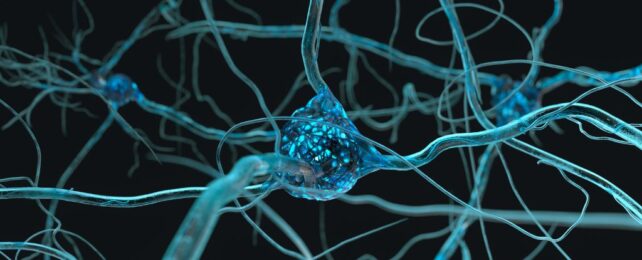A new genetic disease has been described for the first time in three children with shared neurodevelopmental issues.
Researchers have identified a gene that it primarily responsible for the rare speech and movement disorder, though further research is needed to understand its role in cleaning up defunct proteins in the brain.
Building on this knowledge could contribute to understanding more common brain diseases such as Alzheimer's, that are also thought to arise from a breakdown in the brain's maintenance.
One of the children identified in the current study was taken to the doctor at three years of age with an abnormal gait, poor coordination, and episodes of staring. A second individual showed abnormal hand movements and staring episodes at just nine months of age.
Her younger sister was born prematurely. As she grew, the sister also showed mild speech and gross motor delays. At about age three her development began to improve, although she was still somewhat behind compared to others her age.
In all three cases, researchers identified mutations in both copies of a gene linked to the recycling of damaged or defective cells in the brain, called ATG4D.
This clean-up process is called autophagy, and dysfunctions in its operation have been tied to other neurological disorders in the past. When autophagy is disrupted in Alzheimer's, for instance, proteins seem to clog up brain cells and stop them from functioning properly.
In 2015, ATG4D mutations were linked to neurodegenerative disease in canines and zebrafish, while in 2021 mice with the mutation showed signs of neurodegeneration. But this is the first time the gene has been tied to neurological disorders in humans, with researhers revealing mutations in the ATG4D gene can possibly lead to developmental disturbance in speech and movement among children, too.
How that plays out practically in various neurodevelopmental diseases will need to be further explored using human neurons.
The three children examined in the current study all had similar symptoms, although with slight variations. They also had almond-shaped eyes, a depressed nasal bridge, and a prominent Cupid's bow in their upper lip.
These physical features might be a sign of their shared genetic mutation, or they could simply be a coincidence. With such a small number of patients identified, it's hard to say for sure.
"We have only a bird's eye view of many important cellular processes like autophagy," admits genomics researcher May Christine Malicdan from the National Institutes of Health (NIH).
The current study was limited to the three patients, and when their shared gene mutations were replicated in a human cell line, there were no apparent defects in autophagy observed, in spite of models predicting otherwise.
This discrepancy might be due to other genes playing a role in autophagy as well. In other words, ATG4D isn't the only gene that instructs for protein clearance.
Unlike other cells in the body, however, neurons are particularly dependent on autophagy. Here, there's a chance the function of ATG4D is irreplaceable.
"The brain is so complex, and neurons have very specialized functions," explains Malicdan.
"To fit those functions, different neurons use different genes, so changes in redundant genes can have major impacts in the brain."
How exactly ATG4D contributes to the recycling of cellular waste in the brain is not well understood. Keeping in mind the challenges they can pose for individuals and their families, rare diseases like this new, yet-to-be-named condition present pathways for scientists to learn more about the diverse ways the human body works (and fails).
"That's the million-dollar question in rare disease research," says Malicdan. "Rare diseases can help us understand biological pathways, so we can better understand how those pathways contribute to other rare and common conditions."
The study was published in npj Genomic Medicine.
